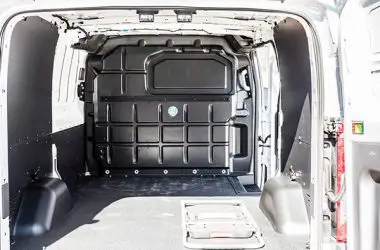There are a variety of fuel types used to power cars today. The most common fuels are gasoline, diesel, electric batteries, hybrid combinations of gas and electric, hydrogen fuel cells, biofuels like ethanol, propane, and compressed natural gas. This article will provide an overview of the different types of fuels used in cars, discussing how they work, their benefits and drawbacks, and their prevalence.
Gasoline
Gasoline, also known as petrol, is a transparent fuel derived from crude oil and made up of organic compounds including paraffins, cycloparaffins, aromatics and olefins (History of gasoline). It has been used to power internal combustion engines since the late 19th century.
The first gasoline-fueled, four-stroke cycle engine was built in Germany in 1876 by Nikolaus Otto. Gasoline engines were further developed in the 1880s by Gottlieb Daimler and Wilhelm Maybach. By the late 19th century, gasoline engines were powering automobiles, leading to the rise of mass-produced cars like the Ford Model T (Energy Use and the Internal Combustion Engine).
In a gasoline engine, the fuel is mixed with air and compressed before being ignited by a spark plug. This causes rapid combustion which moves the pistons, powering the engine. The main advantages of gasoline engines are high power-to-weight ratio, low cost, and familiar infrastructure. Disadvantages include lower efficiency than diesel engines and more harmful emissions.
Diesel
Diesel fuel is a liquid fuel made from crude oil that is used in diesel engines. The German scientist Rudolf Diesel invented the diesel engine in the 1890s. He showed that fuel could be ignited without using an electric spark, through compression ignition instead. This makes diesel engines more efficient than gasoline engines (Source).
Diesel fuel differs from gasoline in a few key ways. It has a higher boiling point, viscosity, density, and contains more energy per gallon. Diesel engines compress the air in the cylinders to high pressures and temperatures to ignite the fuel. This causes a more powerful compression of the fuel-air mixture than in gasoline engines (Source).
Some pros of diesel fuel are better fuel economy, more torque and power, increased engine life span, and lower risk of catastrophic failure. Some cons are higher upfront costs, louder operation, more emissions, and the need to periodically add an anti-gel additive in cold weather.
Electric
Electric vehicles (EVs) are powered by an electric motor instead of an internal combustion engine that runs on gasoline or diesel. EVs use energy stored in a battery pack to power the electric motor. They are charged by plugging them into an electric power source.
EVs produce no emissions from the tailpipe because they don’t burn gasoline. However, there are emissions associated with generating the electricity used to charge the vehicles’ batteries. The overall environmental impact depends on the fuel source used to generate the electricity. EVs powered by renewable energy like solar or wind have a much lower carbon footprint compared to EVs powered by electricity generated from fossil fuels.
Some studies show that even when powered by electricity from the average US grid, EVs generate lower lifetime emissions than gas or diesel vehicles. As more renewable energy sources are added to the grid, the emissions from EVs will continue to decrease.
The main components of an EV include the battery pack, electric motor, and power electronics that manage the battery’s charge and delivery of electricity. EVs don’t have complicated transmissions or exhaust systems like internal combustion engine vehicles. With fewer moving parts, EVs require less maintenance over their lifetime.
However, EVs have some limitations compared to gas-powered cars. The driving range on a single charge is lower, from 100 to 250 miles depending on the model. Recharging the battery pack can take several hours using a home charger. Public fast charging stations can recharge to 80% in 30 minutes, but availability is still limited compared to gas stations. The batteries are expensive and may need to be replaced after 8-10 years.
Hybrid
Hybrid cars combine an internal combustion engine and an electric motor (Consumer Reports, 2023). The gasoline engine provides power to the wheels and charges the battery, while the electric motor uses energy stored in the battery to power the car (Consumer Reports, 2023). This allows hybrids to get better fuel economy than gas-only vehicles.
When driving at low speeds or braking, the electric motor does most of the work. At higher speeds, the gas engine takes over. Some hybrids can also run in pure electric mode for short distances (Consumer Reports, 2023).
The main advantage of hybrids is improved fuel efficiency. Hybrids typically get around 50 mpg in combined city/highway driving, compared to around 30 mpg for similar gas-only vehicles (Consumer Reports, 2023). Hybrids also produce lower emissions. However, they cost more than gas-only cars. Maintenance can be more complex and expensive on hybrids as well.
Hydrogen Fuel Cell
Hydrogen fuel cell vehicles use hydrogen gas to power an electric motor. The vehicle converts hydrogen gas and oxygen into electricity to run the motor. Unlike gasoline powered engines, hydrogen fuel cell vehicles have zero harmful emissions – the only byproduct is water vapor.
Hydrogen fuel cells work by passing hydrogen through the anode of a fuel cell and oxygen through the cathode. The hydrogen atoms are separated into protons and electrons at the anode. The protons pass through a membrane while the electrons create an electrical current that powers the electric motor. The protons, electrons and oxygen combine on the cathode side to form water.
Fuel cell vehicles can refuel much faster than battery electric vehicles. Refueling takes 3-5 minutes, similar to gasoline vehicles. They also have longer ranges, with most modern fuel cell cars able to go 300+ miles on a full tank. However, hydrogen fueling infrastructure is still being developed, so fuel cell vehicles are limited primarily to California where stations exist.
Major automakers like Toyota, Honda and Hyundai currently offer limited production fuel cell vehicle models. But costs remain high and availability low. Experts believe fuel cells have potential for larger vehicles like buses and trucks in coming years as the technology evolves. [1]
Biofuels
Biofuels are fuels made from biomass like plants and agricultural waste. The two most common types of biofuels used in vehicles are ethanol and biodiesel.
Ethanol is an alcohol fuel made by fermenting the sugars from crops like corn, sugarcane, or switchgrass. It can be blended with gasoline or used on its own in flex-fuel vehicles. Ethanol blends like E10 (10% ethanol, 90% gasoline) can be used in most conventional gasoline vehicles. E85 (85% ethanol, 15% gasoline) requires flex-fuel vehicles specifically designed for higher ethanol blends. The main benefits of ethanol are that it is renewable, produces fewer greenhouse gas emissions, and can be domestically produced to reduce reliance on foreign oil imports. However, controversy exists around the large amounts of land, water, and energy required to grow the crops used to make ethanol. There are also concerns that corn ethanol production utilizes resources that could otherwise be used to produce food crops.
Biodiesel is made by converting oils from soybeans, canola, restaurant grease, or animal fat into fuel. It can be blended with conventional diesel or used pure in some vehicles. Biodiesel blends are designated BXX, where XX is the percentage of biodiesel. Common blends include B5 and B20. Benefits of biodiesel include lower emissions, biodegradability, and utilizing waste oils as feedstock. Drawbacks are that growing large amounts of oilseed crops can displace food production and biodiesel may produce more nitrogen oxide emissions compared to petroleum diesel.
Overall, biofuels like ethanol and biodiesel can supplement petroleum fuels to some degree. However, their scalability and resource requirements make them unlikely to completely replace gasoline and diesel for transportation in the near future. They may fill a niche role, especially in fleets trying to reduce emissions. More research is needed to increase biofuel production efficiency and determine optimal applications.
Source: https://simpleblog.ai/blog-ideas/Fuel-Efficient-Cars
Propane
Propane is an alternative fuel option for vehicles that provides some advantages over traditional gasoline. Propane does have lower energy density and requires larger fuel tanks. However, propane engines produce fewer harmful emissions than gasoline-fueled engines. The use of propane has increased in recent years as more propane filling stations have opened and propane system costs have fallen.
Propane vehicles are most commonly used for fleets of taxis, buses, delivery trucks, forklifts, and other high-mileage vehicles. Propane is produced as a byproduct of natural gas processing and oil refining, so it is readily available domestically in the United States. Propane’s high octane rating allows for higher compression ratios to be used in engines, resulting in more power output. In propane vehicles, the fuel is stored as a liquid under high pressure. When released from the tank, the propane converts to a gas and mixes with air before being combusted in the engine. (https://www.quora.com/What-are-the-pros-and-cons-of-using-propane-as-a-vehicle-s-primary-source-of-fuel)
The main advantages of propane as a vehicle fuel are reduced emissions, domestic availability, high octane rating, engine longevity, lower fuel costs, and existing infrastructure. The disadvantages are less power/range than gasoline, need for heavier fuel tanks, and lower energy density. Overall, propane can be a good option for high-mileage vehicle fleets looking to reduce emissions and fuel costs. (https://zephyrsolutions.com/propane-fuel-near-zero-emissions-vehicles/)
Compressed Natural Gas
Compressed natural gas (CNG) is the alternative fuel for vehicles produced by compressing natural gas to less than 1 percent of its volume at standard atmospheric pressure. CNG is a cleaner and more affordable alternative to gasoline that is domestically produced and readily available.
CNG vehicles are powered by engines that are optimized to run on natural gas that is stored on-board in high-pressure cylinders. Refueling stations compress natural gas from the same distribution system used for home gas appliances, fill vehicles quickly through a high-flow, high-pressure nozzle and hose similar to those used for conventional fuels.
CNG vehicles provide similar horsepower, acceleration and cruise speed characteristics as conventional fueled vehicles. They also have the same driving range and require less maintenance due to the low oil contamination associated with CNG fuel. The life and reliability of a CNG vehicle’s engine is comparable to that of a gasoline engine, and conversions from gasoline to CNG are simple and cost efficient (https://www.compare.com/car-buying/natural-gas-vehicles-guide).
Some cons of CNG vehicles include the high costs of implementing the technology and lack of available refueling stations in some areas. CNG vehicles also tend to be less powerful and slower than gasoline-powered cars (https://www.carsdirect.com/green-cars/natural-gas-vehicles-pros-and-cons). Despite these drawbacks, CNG remains a viable, more environmentally-friendly alternative fuel for many drivers.
Conclusion
Cars today have several fuel option choices, each with their own advantages and disadvantages. Gasoline remains the most common fuel for consumer vehicles, providing a balance of range, cost, and infrastructure support. Diesel offers greater efficiency and torque for pickup trucks and industrial vehicles. Electric vehicles provide a clean and quiet experience, but have limited range and higher upfront costs. Hybrids like the Toyota Prius merge gasoline and electric motors to maximize efficiency. Hydrogen fuel cell cars emit only water vapor, but require new infrastructure to catch on. Biofuels and natural gas serve niche applications as well.
For most drivers, gasoline and diesel remain the pragmatic picks thanks to their refueling infrastructure and familiarity. But the rise of electric and alternative fuel vehicles provides more options for those looking to reduce emissions or try new technology. Each fuel type has strengths and weaknesses that determine its best uses. Continued innovation and infrastructure investment will shape the future diversity of fuels powering personal transportation.




